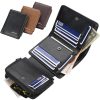YOUR CART
- No products in the cart.
Subtotal:
0,00 €
BEST SELLING PRODUCTS
24,00 € – 29,00 €Price range: 24,00 € through 29,00 €





